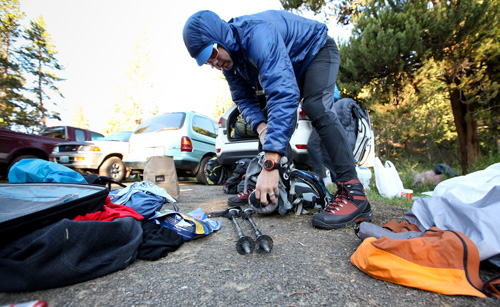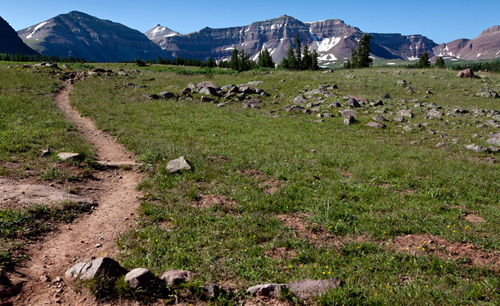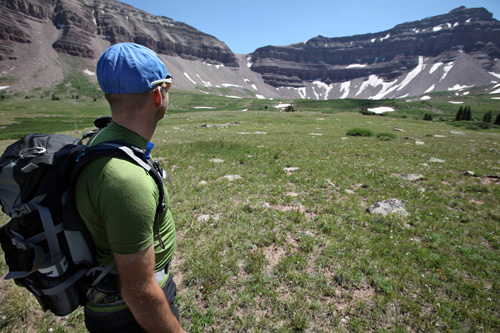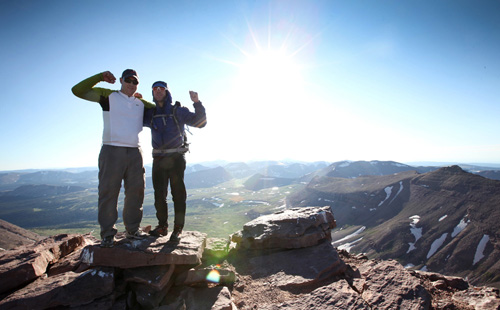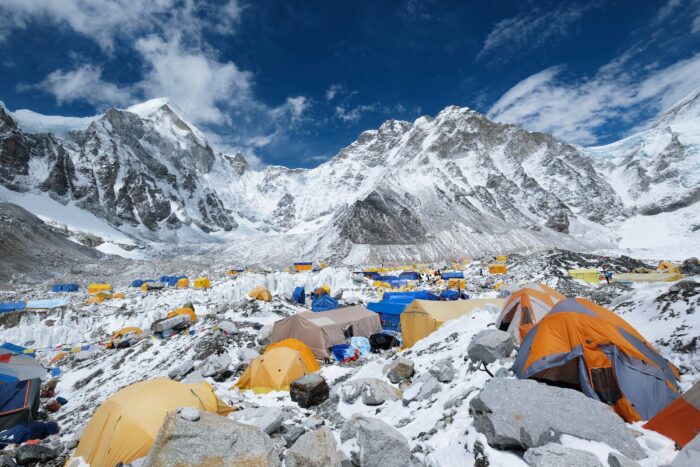Kings Peak is the highest mountain in Utah, a 13,528-foot pyramid of rock in the state’s remote Uinta Range. To climb to the top, you hike almost 30 miles round-trip, a journey that starts on a well-worn path and ends — hours or days later, depending on your speed — atop a knife-edge ridge that seems to float in the sky. Earlier this month, under blazing sun and blue above, I stood on Kings’ summit with two friends and fellow GearJunkie staffers, T.C. Worley and Pat Petschel, and gazed west. A cliff dropped off a few hundred feet, and the view went on forever. For a moment, we were standing taller than anyone else for miles around.
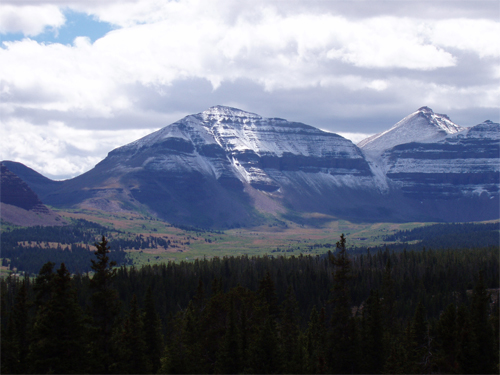
My group’s journey to the top began 11 hours earlier at a trailhead just above 9,000 feet. We had hiked fast for most of the day, taking stops to eat or shoot video to record the trip. I tracked the trip with a SPOT device, putting down waypoints and a virtual GPS path as we climbed (see interactive map below).
Overall, the theme of the trip was “fast and light,” and our backpacks followed suit. Our gear was skimmed to the very essentials for the climb. In my pack, I carried a tent, sleeping bag, a tiny pad, a shell jacket, and some food. Like any backcountry trip, I attempted to skim as light as possible on Kings, though without compromising on safety in the wilderness.
